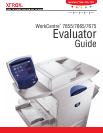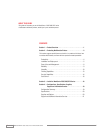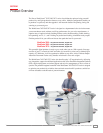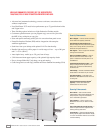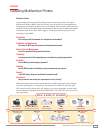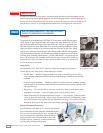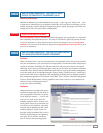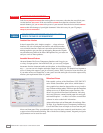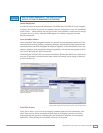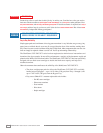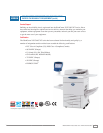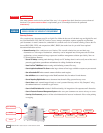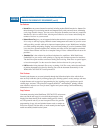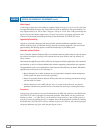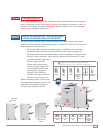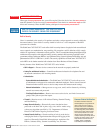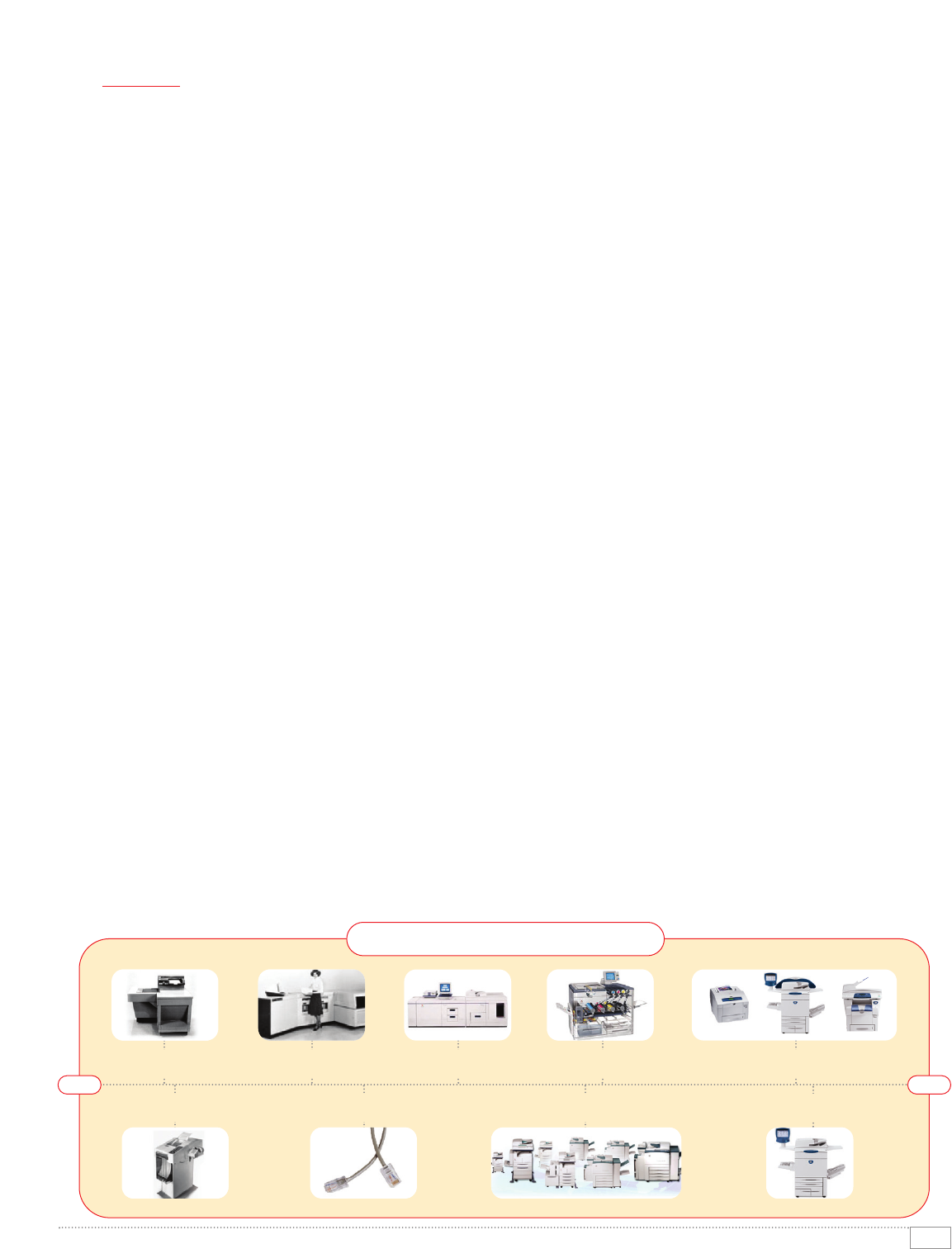
1979: Ethernet
1
st
LAN
New! WorkCentre 7655/7665/7675 series
1995: Document Centre
®
Family
Evaluation Criteria
As the company that invented laser printing, Ethernet networking, and the first digital
Multifunction Printer (MFP), Xerox has invested years of research and development into
designing the most productive office devices in the industry. This experience makes Xerox the
recognized leader in office MFP design and performance. Based on our in-depth understanding
of customer needs in the office, Xerox suggests considering the following criteria when
evaluating a shared MFP:
Productivity
Can it keep up with the demands of a multiple-user environment?
Installation and Deployment
How does the MFP ease the demands of the deployment process?
Ease-of-Use and Management
Are all the capabilities integrated and intuitive?
Reliability
Is it designed and built for demanding use and backed by a quality organization?
Versatility
Can the MFP grow with changing demands?
Finishing
Can the MFP provide the distribution-ready documents that you require?
Security
Is the MFP able to keep your confidential information safe?
Cost Control
Can you monitor and control your organization’s cost of printing?
MFPs often look the same from the outside. Based on a quick look at speeds, feeds, and print
resolution specifications, it is tempting to conclude that most MFPs are basically equal.
This section of the Evaluator Guide will suggest ways you can thoroughly evaluate them,
and will ultimately illustrate how the Xerox WorkCentre
®
7655/7665/7675 series can exceed
your expectations.
3
WORKCENTRE 7655/7665/7675 EVALUATOR GUIDE
SECTION 2
Evaluating Multifunction Printers
1959: The Xerox 914
1
st
Plain Paper Copier
1977: 9700 Production Printer
1
st
Xerographic Laser Printer (120 ppm)
1990: Docutech
®
1
st
Digital Publishing System
1996:
DocuColor
®
2005: Industry’s
Broadest Portfolio
1973: Telecopier
®
200
1
st
Laser Plain Paper Fax
Then
Now
Xerox: A History of Innovation
2007: The Innovation
Continues



